Aquatic Pollution and Toxicology
Aquatic pollution is defined as the contamination of aquatic systems (such as lakes, rivers, oceans, aquifers, and groundwater) by enormous amounts of waste material that alters the water in a negative manner. When hazardous contaminants are discharged directly or indirectly into aquatic systems without being removed, this sort of ecological deprivation occurs. Pollution of the water causes harm to organisms and vegetation that thrive in it, including amphibians. Industrial waste, mining activities, sewage and wastewater, marine dumping, fossil fuel combustion, accidental oil leakage, global warming, atmospheric deposition, and urban development are all major sources of aquatic contamination.
Aquatic species have played a significant part in our ecosystem as early warning and monitoring systems for pollutant burdens. They do, however, have the potential to achieve even more, just as they have in basic biology, where preparations like the squid axon have been crucial in defining physiological and biochemical systems. To evaluate the dangers posed to the aquatic environment, aquatic toxicology entails measuring pollutant levels and assessing harm to freshwater and/or marine organisms. This branch of study also contains information on how potential risks in and near aquatic habitats can influence humans.
- Aquatic Toxicity Tests
- Risk Assessment

Perry Raso
Matunuck Oyster Farm, United States
Joni Lee Giovanna Hesley
Education Emerita, CropKing Inc., United States
Virendra Kumar Goswami
Indian Institute of Technology, India
Amit Das
Memorial University of Newfoundland, Canada
Mandeep Kaur
Panjab University, India
Pavarot Noranarttragoon
Department of Fisheries, Thailand



Title : Application of Artificial Intelligence and NISAR satellite to study the air sea CO2 exchange and aquatic toxicology to develop ‘Aquatic Pollution Remediation Technologies’(PART)
Virendra Kumar Goswami, Indian Institute of Technology, India
Title : Conditionally pathogenic microparasites (Microsporidia and Myxosporea) of mullet fish potential objects of mariculture in the Black and Azov Seas
Violetta M Yurakhno, A. O. Kovalevsky Institute of Biology of the Southern Seas of Russian Academy of Sciences, Russian Federation
Title : Integrating art, science and rural development: The multifaced role of aquarium keeping
T V Anna Mercy, Kerala University of Fisheries and Ocean Studies, India
Title : Seaweed aquaculture policy gap analyses in Indonesia, Kenya, and Tanzania
Megan Considine, The Nature Conservancy, Puerto Rico
Title : Utilizing art to enhance learning STEM subjects required for aquaculture
Joni Lee Giovanna Hesley, Education Emerita, CropKing Inc., United States
Title : Exploring the aquaculture potential of marine sponges (Phylum Porifera) in Kerala, India: A focus on growth dynamics and optimization of farming protocols
Anita M George, University of Kerala, India